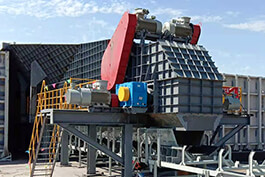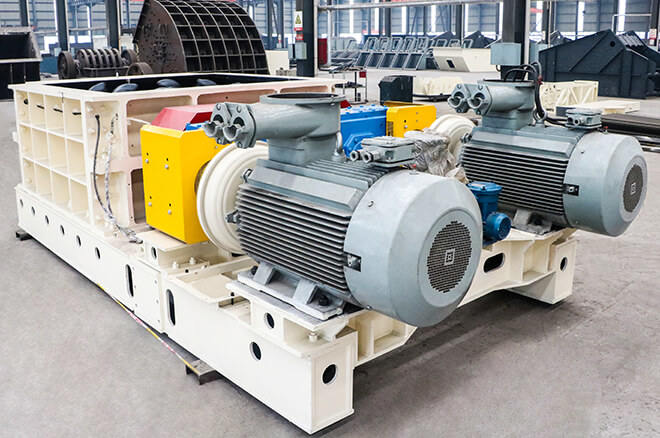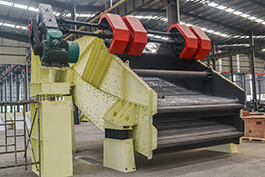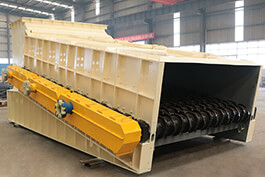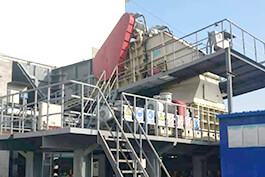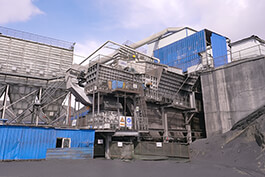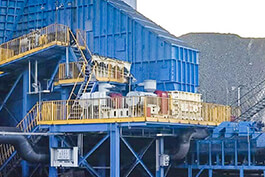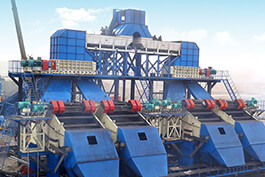In the coal-related industrial field, the crushing of large coal blocks has always been a difficult problem. The coal extracted from coal mines often exists in large block form. During transportation, due to their large volume, these large coal blocks are difficult to adapt to the standard dimensions of various transportation equipment, resulting in a significant reduction in transportation efficiency. Moreover, the loading and unloading of large coal blocks are extremely inconvenient, requiring a lot of manpower and time, which increases transportation costs.
When coal is used for combustion to generate electricity or for heating in industrial boilers, the disadvantages of large coal blocks become even more obvious. Their combustion efficiency is low because the contact area between coal and air is limited, and the chemical reaction cannot be fully carried out. This not only causes waste of energy but also may lead to incomplete combustion, generating more pollutants such as carbon monoxide and dust, causing serious environmental pollution.
In the past, people often used traditional crushing methods to deal with large coal blocks, such as jaw crushers. Jaw crushers crush materials by the relative movement of the movable jaw and the fixed jaw through squeezing and splitting. However, this method has many shortcomings when dealing with large coal blocks. Its crushing ratio is limited, and for some extremely large coal blocks, multiple crushing operations are often required to achieve the desired particle size, which undoubtedly reduces production efficiency. Moreover, jaw crushers are prone to material jamming during operation. Once jammed, the machine needs to be shut down for cleaning, which not only affects production progress but also increases equipment maintenance costs. There is also the hammer crusher, which uses high-speed rotating hammer heads to impact materials for crushing. However, for large coal blocks, the hammer heads wear out very quickly, and frequent replacement of hammer heads not only increases operating costs but also prolongs equipment downtime, affecting the continuity of the entire production process. It is precisely these limitations of traditional crushing methods that have made efficient solutions for crushing large coal blocks an urgent need in the industry, and
feeder breaker emerged in this context.
Feeder breaker, as an innovative device for solving the problem of crushing large coal blocks, has gradually gained prominence in the coal industry. From the appearance, it has a sturdy and large body, with a compact and reasonable overall structure design. Its wide feeding port can easily accept large coal blocks, like a "steel giant" with a wide-open mouth, ready to "devour" the coal. The main part consists of a crushing unit and a conveying unit. The crushing unit can be selected in two forms according to different customer needs: hammer crushing and toothed roller crushing. This new form of crushing part can effectively avoid the generation of long strip-shaped materials and greatly improve the crushing efficiency. Combined with the scraper conveyor unit, it can effectively improve its working efficiency.
Traditional crushers have a limited crushing ratio and are difficult to crush large coal blocks to the desired particle size in one operation. However, feeder breaker, with its unique toothed roller design and powerful power system, can achieve a larger crushing ratio and easily handle various extremely large coal blocks. When it comes to the problem of material jamming, feeder breaker also has a natural advantage. Its smooth internal structure and continuous through operation allow coal to pass through the crushing area smoothly, greatly reducing the risk of material jamming and the downtime caused by it, ensuring the continuity of production.
.jpg)
Feeder breaker demonstrates an impressive high crushing ratio when crushing large coal blocks. Under normal circumstances, it can crush large coal blocks with a diameter of over 1000mm to a particle size of less than 200mm, or even smaller particles in one operation, with a crushing ratio of over 5:1. In contrast, the traditional jaw crusher has a crushing ratio generally between 4-6:1. For large coal blocks of the same size, it often requires multiple crushing processes to achieve similar particle size requirements. Although the hammer crusher has a slightly better crushing ratio, reaching 10-15:1, when dealing with super-large coal blocks, the wear problem of its hammer heads seriously affects the crushing efficiency and the service life of the equipment. The feeder breaker, with its unique tooth plate design and powerful power output, can effectively tear and squeeze the coal during the crushing process, achieving a high crushing ratio, significantly improving the crushing efficiency and reducing the crushing process.
On the coal production line, the processing capacity of the feeder breaker is particularly outstanding. Taking a common large
feeder breaker as an example, its coal processing capacity per hour can reach over 1,000 tons, a figure that many traditional crushers find hard to match. From the internal structure perspective, its wide feed inlet can quickly accept large coal blocks, and the space layout of the crushing cavity is reasonable, allowing the coal to flow smoothly without clogging. At the same time, its drive unit is equipped with a high-power motor, which can provide continuous and strong power to the crushing tooth rollers, ensuring the efficient operation of the crushing process. In comparison, the processing capacity of a small jaw crusher may only be a few dozen tons per hour, and even for large jaw crushers, their processing capacity is far lower than that of the feeder breaker. Although the hammer crusher can increase the processing capacity to a certain extent, due to the wear problem of the hammer heads, it needs to be shut down frequently for replacement, which also affects its actual processing capacity to a certain extent. The feeder breaker, with its efficient processing capacity, can meet the needs of large-scale coal production, providing strong support for enterprises to improve production efficiency and reduce production costs.
The feeder breaker has a significant advantage in energy consumption, thanks to its advanced energy-saving design principles. In terms of energy transmission, it adopts an efficient transmission system, reducing energy loss during the transmission process. For example, the connection components between the drive unit and the crushing tooth rollers are carefully designed and manufactured with a low friction coefficient, maximizing the transfer of motor output energy to the crushing work. From the perspective of working component design, the shape and arrangement of the crushing teeth have been repeatedly optimized, enabling the coal to be crushed with the minimum energy consumption and achieving the maximum crushing effect. According to actual test data, compared with the traditional jaw crusher, the feeder breaker can reduce energy consumption by 20%-30% when processing the same amount of coal. During the operation of the traditional jaw crusher, due to its crushing method mainly being compression and splitting, it requires a large amount of energy to overcome the compressive strength of the material, and during the crushing process, the material is prone to stagnation and clogging, further increasing energy consumption. The hammer crusher, on the other hand, requires a large amount of energy to maintain the high-speed rotation of the hammer heads and has a low energy utilization rate during the impact process between the hammer heads and the coal. The low energy consumption feature of the feeder breaker not only conforms to the current energy-saving and emission reduction environmental protection concept but also saves a lot of operating costs for enterprises.
Feeder breaker has achieved remarkable application results due to its numerous significant advantages in the field of large coal crushing. In the future, both its technological improvement direction and market prospects are extremely broad. In terms of technological improvement, intelligence will be an important development trend. With the continuous progress of artificial intelligence and sensor technology, the
feeder breaker produced by our company has already achieved intelligent operation and fault diagnosis. For instance, various sensors are installed inside the equipment to monitor its operating status in real time, including the wear degree of the crushing teeth, the temperature of the bearings, and the current of the motor. Once any parameter shows an abnormality, the system can immediately issue an alarm and, through data analysis, locate the cause of the fault, providing accurate maintenance guidance for maintenance personnel to achieve preventive maintenance of the equipment and reduce losses caused by sudden failures.


.jpg)
